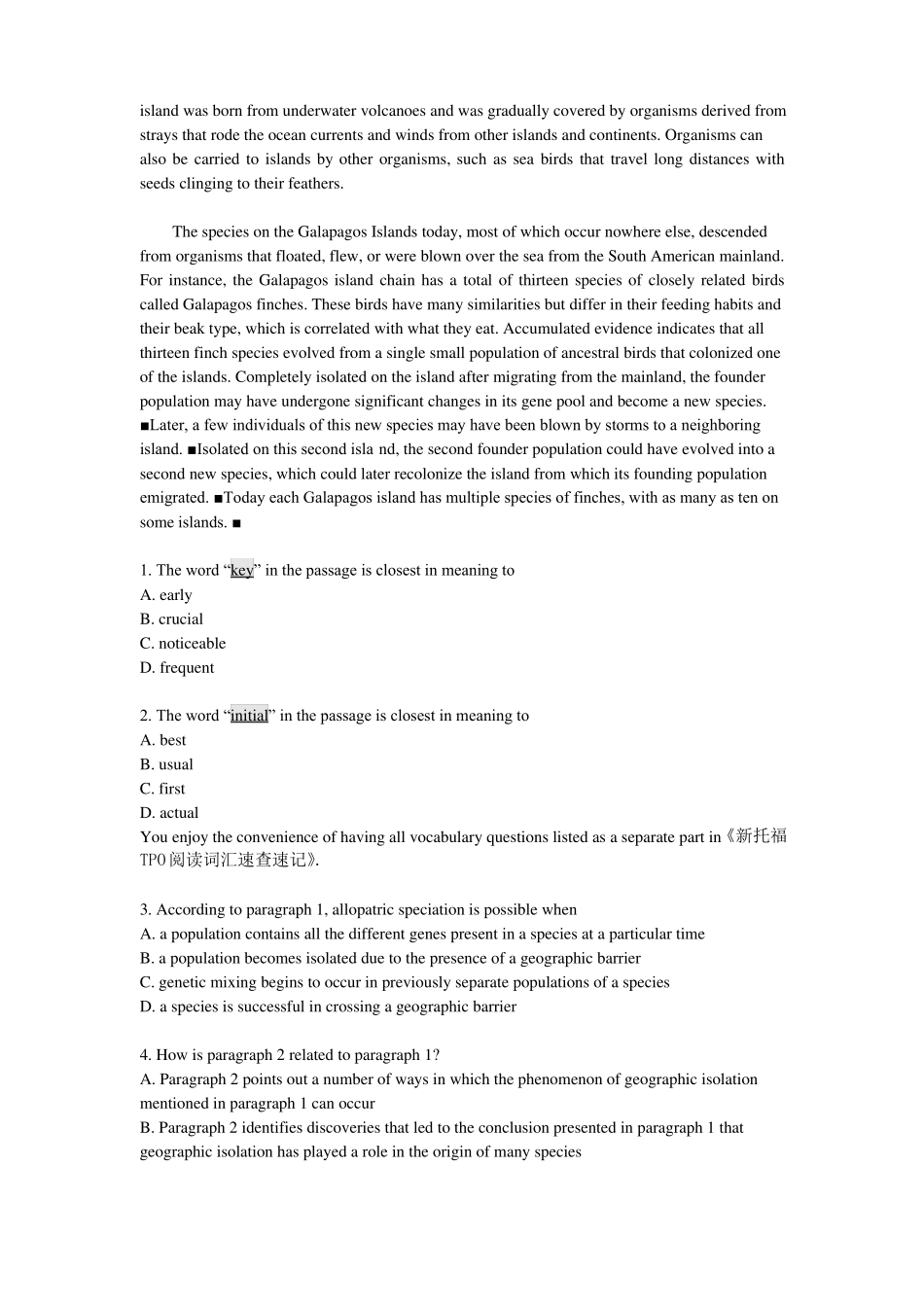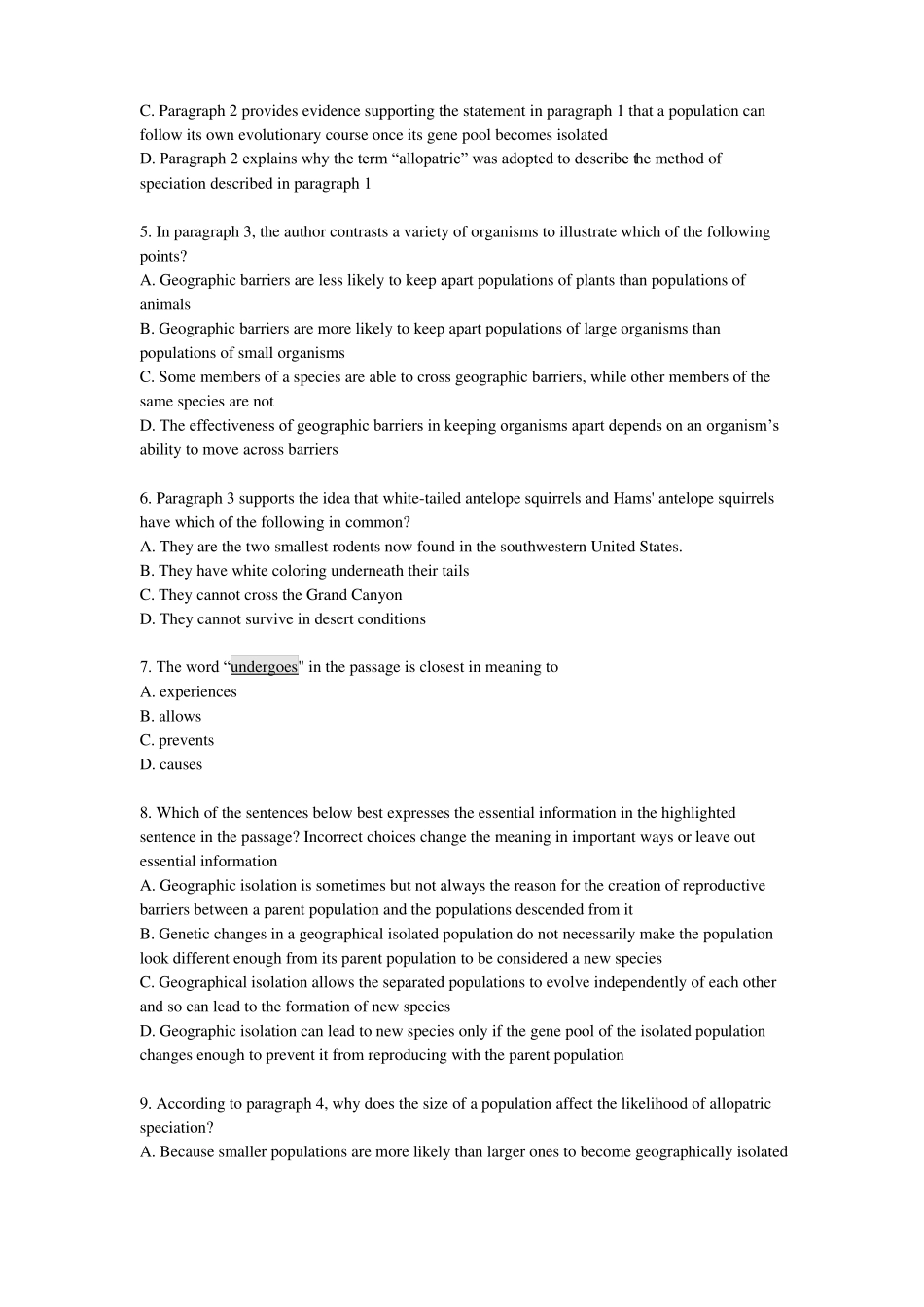TPO-42Geographic Isolation of SpeciesBiologist Ernst Mayr defined a species as “an actually or potentially interbreeding populationthat does not interbreed with other such populations when there is opportunity to do so.” Akeyevent in the origin of many species is the separation of a population with its gene pool (all of thegenes in a population at any one time) from other populations of the same species, therebypreventing population interbreeding. With its gene pool isolated, a separate population can followits own evolutionary course. In the formation of many species, the initial isolation of a populationseems to have been a geographic barrier. This mode of evolving new species is called allopatricspeciation.Many factors can isolate a population geographically. A mountain range may emerge andgradually split a population of organisms that can inhabit only lowland lakes, certain fishpopulations might become isolated in this way. Similarly, a creeping glacier may gradually dividea population, or a land bridge such as the Isthmus of Panama may form and separate the marinelife in the ocean waters on either side.Too many words you don’t know? Look them up in《新托福TPO阅读词汇速查速记》!Wechat:geeqi0805How formidable must a geographic barrier be to keep populations apart? It depends on theability of the organisms to move across barriers. Birds and coyotes can easily cross mountains andrivers. The passage of wind-blown tree pollen is also not hindered by such barriers, and the seedsof many plants may be carried back and forth on animals In contrast, small rodents may find adeep canyon or a wide river an effective barrier. For example, the Grand Canyon, in thesouthwestern United States, separate the range of th...


